When I look at the gallery of images below showing Election Day in Philadelphia (and similar places), I am struck by the number of people out on the street. Today, the definition of who is an “eligible voter” has expanded and voting is safer. These changes are essential for a true democracy. But have we lost something?
In some ways, the reform movement dating to the early 1900s has succeeded in making voting a ritual of civic duty performed by informed citizens. It’s rational, mechanical, an obligation. And it can leave many of us voters feeling cold, like a cog in a machine that has little to do with our daily lives.
Couldn’t Election Day still be safe and inclusive, and still feel like a celebration? My Google search for “where is election day fun?” came up with a depressing list of “fun facts” and grade school lesson plans.
Legislators like Senator Bernie Sanders (D-VT ) and Representative Anna Eshoo (D-CA) have been trying to pass a bill that would make Election Day a national holiday. The rationale is that by making it a public holiday, we could increase voter turnout, which is pretty low, around 50%. The U.S. ranks 31 out of 50 democracies for voter turnout.
Election Day is a state holiday in New Jersey, Delaware, and New York. Not in Pennsylvania.
Our fellow citizens in Puerto Rico celebrate Election Day as a national holiday. Stores are closed. People vote with their families. They gather with neighbors to await election results. Voter turnout there is over 80%.
It looks like a lot of fun.
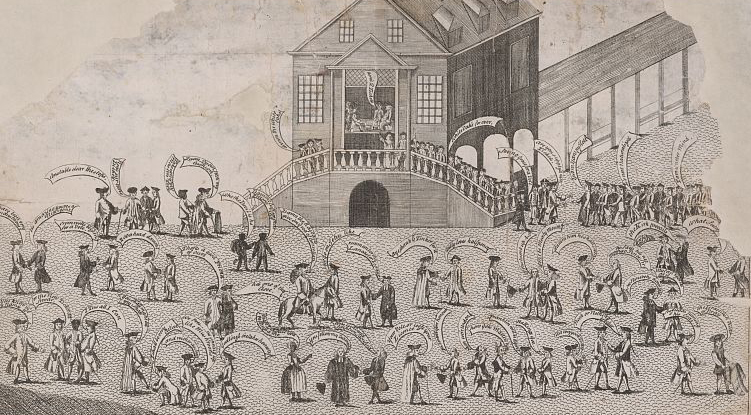
Election Day, Philadelphia, 1764 (Library of Congress)
High (Market) Street from the Country Marketplace with the procession in commemoration of the death of General George Washington, December 26, 1799 by William Birch.
Members of political factions, the Federalists and the Democratic-Republicans, would have been recognizable to the crowd based on the ribbons they wore. (Library Company of Philadelphia)
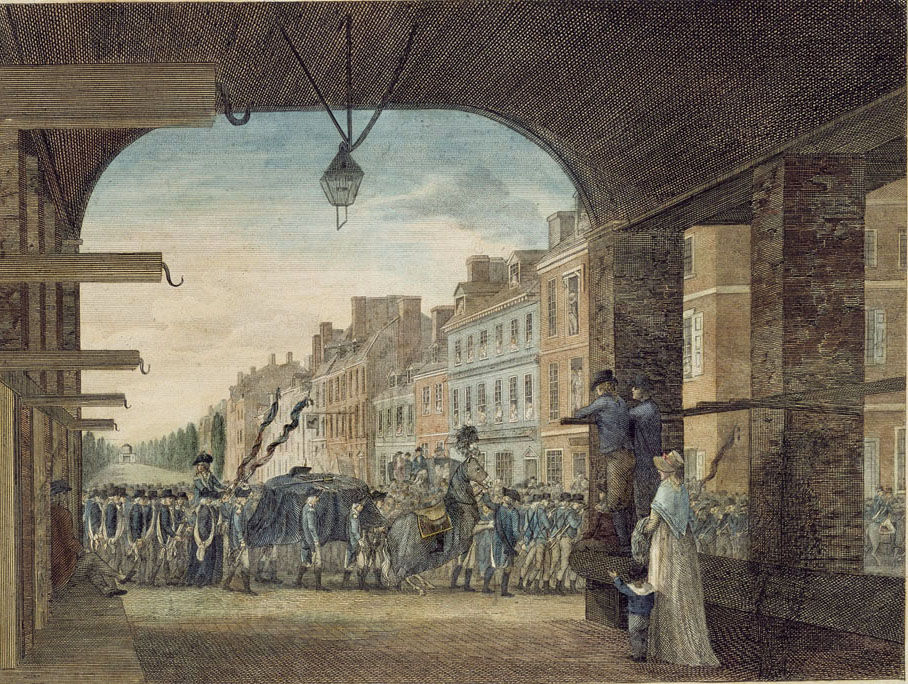
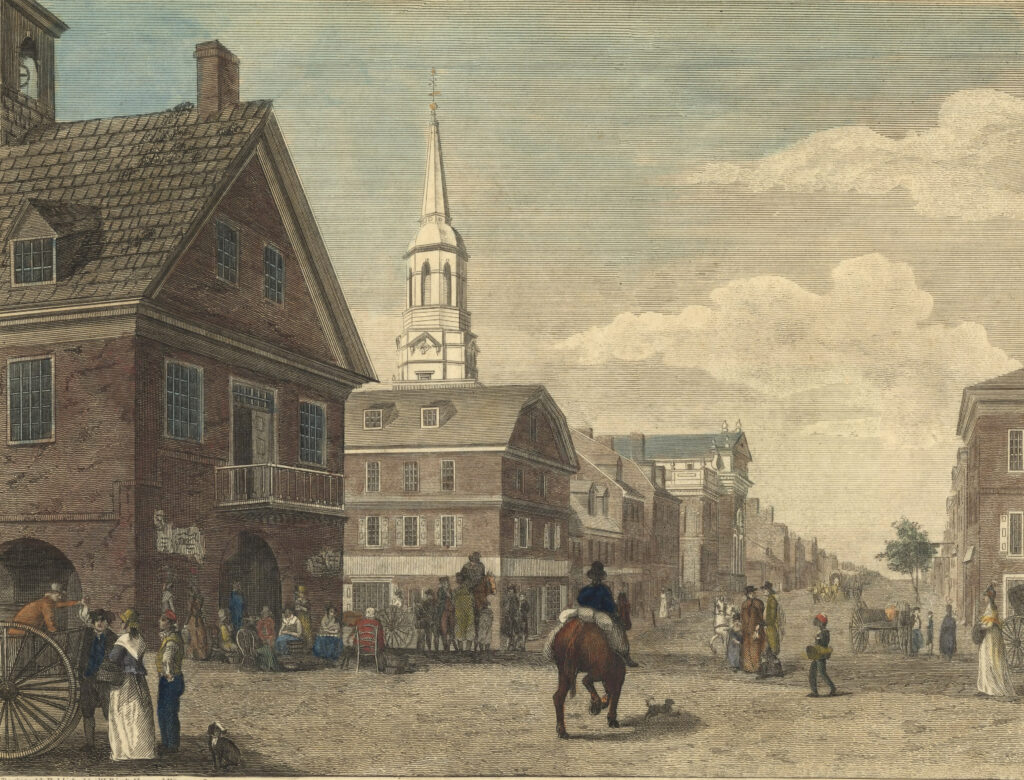
Second Street North from Market Street towards Christ Church by William Birch, 1800
This was the intersection where elections were held in colonial Philadelphia. At this point elections were no longer held here. Also, note that the stairs are now gone at the old courthouse building on the left
(Library Company of Philadelphia)
Election Day 1815 shows scene on Chestnut Street outside the State House (now Independence Hall) by John Lewis Krimmel (Winterthur Museum)
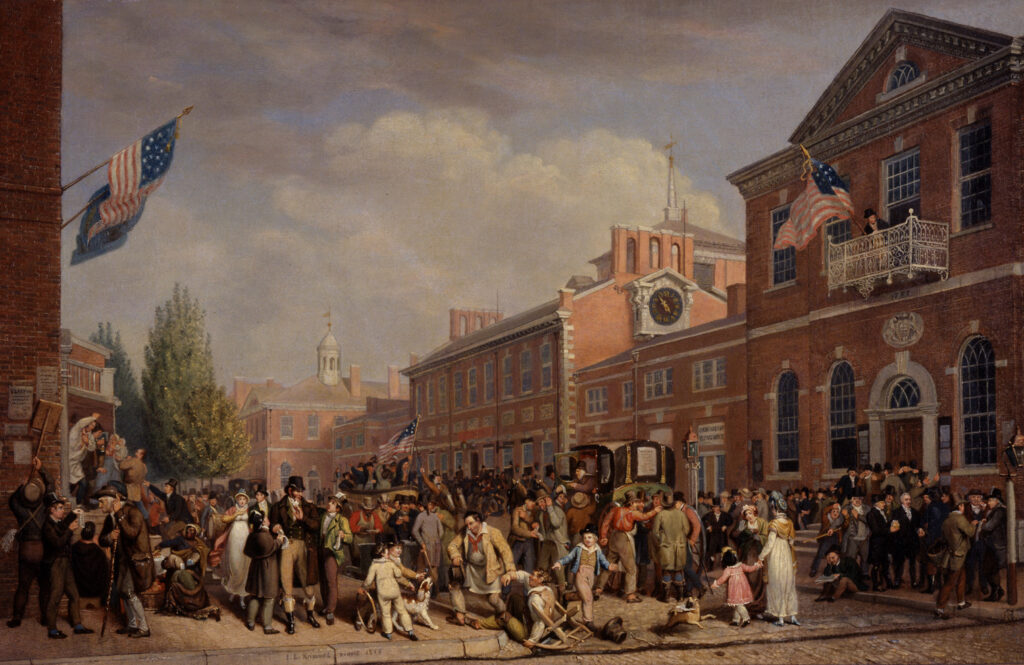
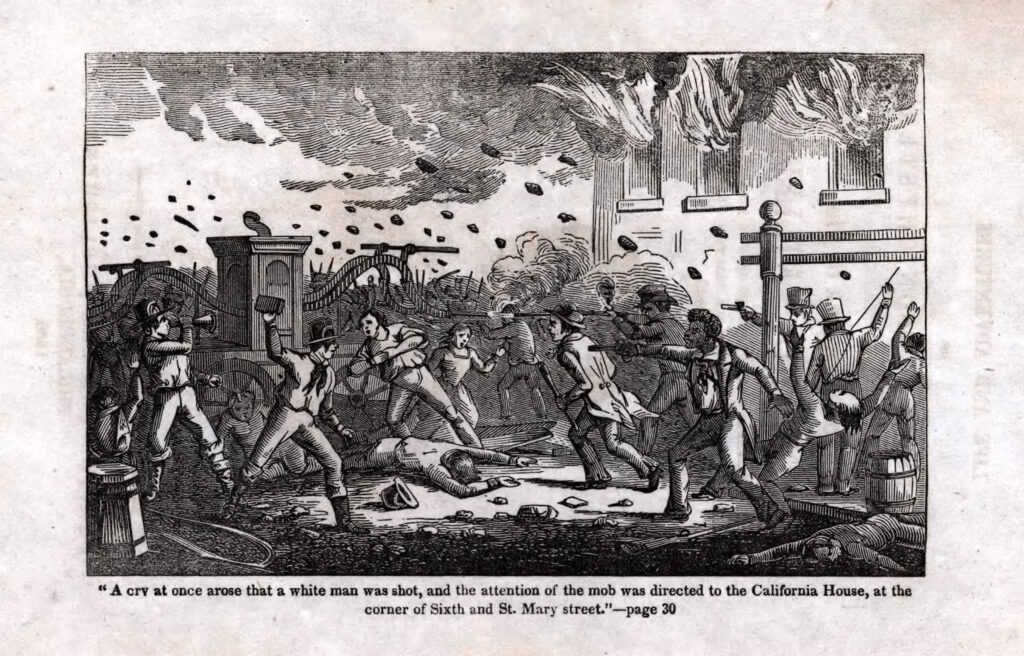
Election Night Anti-Black Violence, Attack on the California House 1849 (Library Company of Philadelphia)
At the Polls on Election Day, Harper’s Weekly, 1857 (Library of Congress)
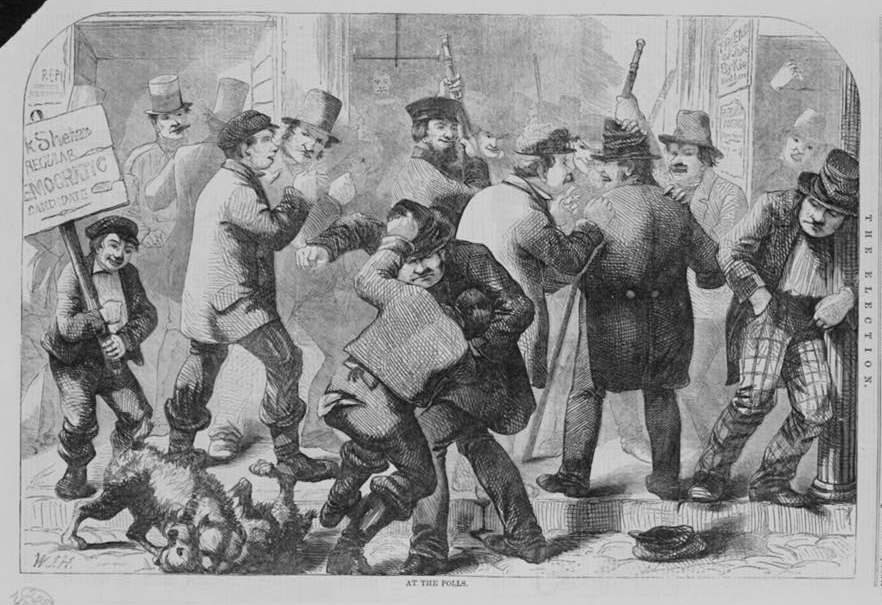
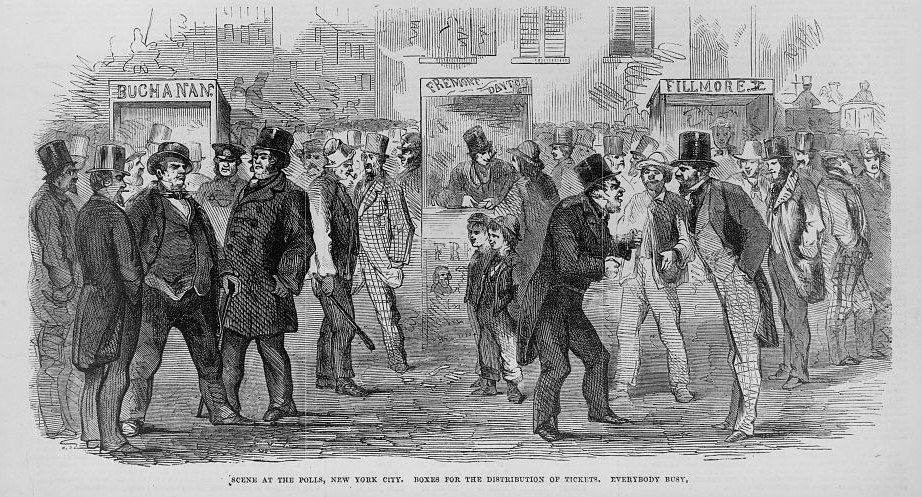
Scene at the polls, NYC, Leslie’s Illustrated Weekly, 1856. This shows the crowds, the ticket booths, the social atmosphere. (Library of Congress)
Election Day posters plastered on wall at 1118 Chestnut Street, 1861 (Free Library of Philadelphia)
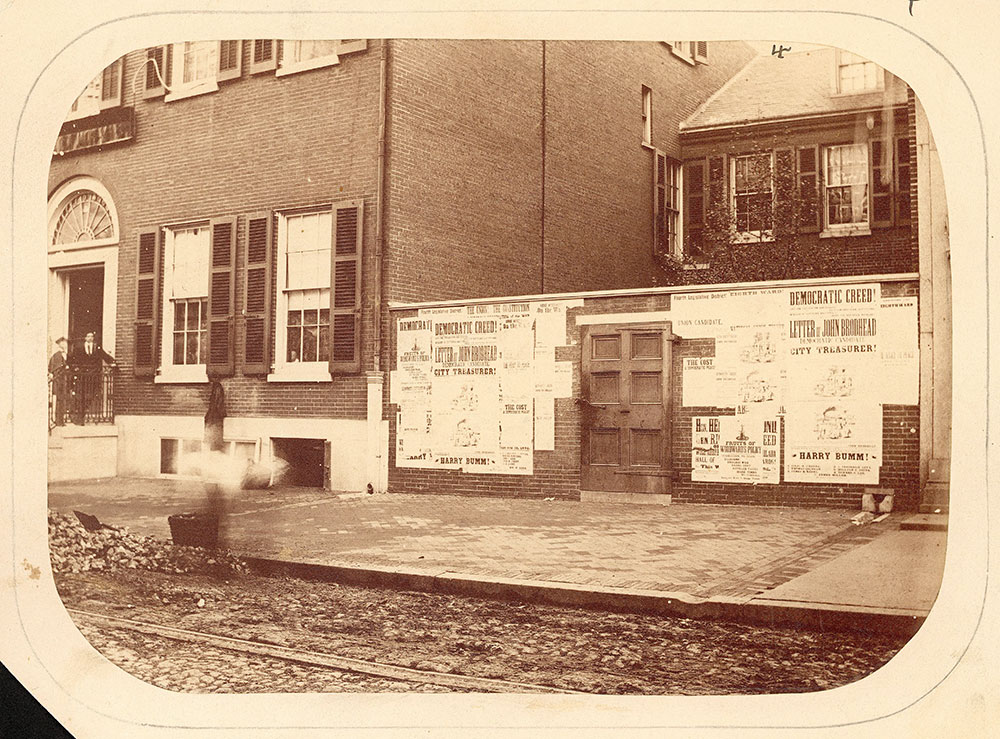
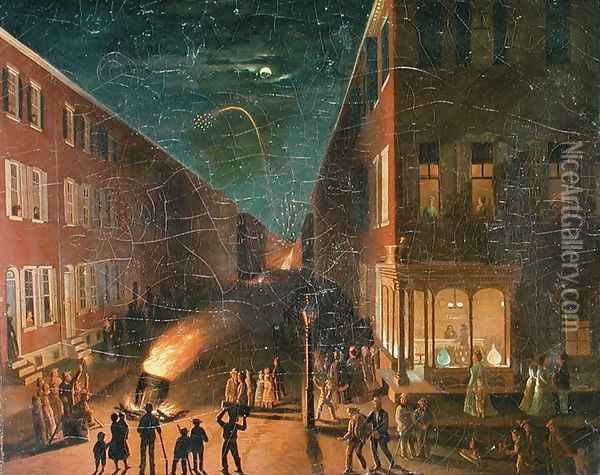
Election Night Bonfire by Bernard Uhle, 1864. Bonfires were reported in Philly neighborhoods on Election Day night up until the 1930s. (Atwater Kent Collection)
A heated moment at the polls in Philly between a man who’s son died in the war and a Democratic ticket pusher in 1864 (Library of Congress)

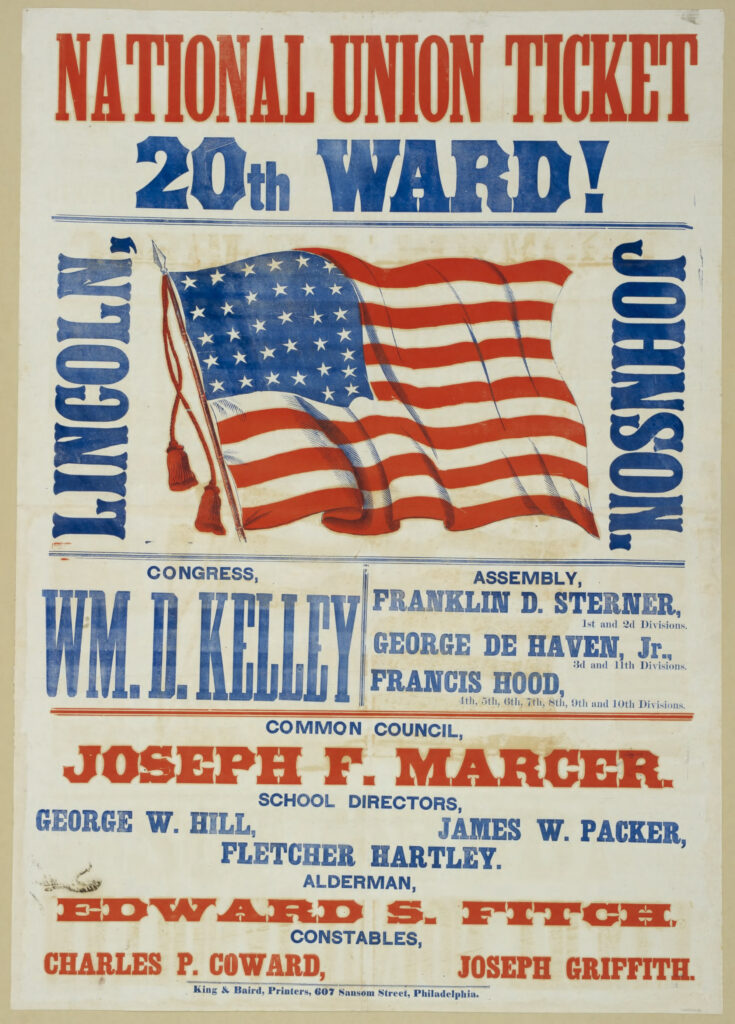
Election day ticket that was printed by the political party and could be cast as an individual ballot at the polls
Union Party Ticket 1864 for the 20th Ward (Library Comapny of Philadelphia)
Ticket captain handing out party tickets and touting partisan rhetoric. He may be offering “pasters,” strips of paper that you could paste onto a party ticket to cover one of the candidate’s names and customize the ticket.
Politician, 19th Century “Vinegar Valentine.” These were often sent anonymously by the haters of the Gilded Age. (Library Company of Philadelphia)
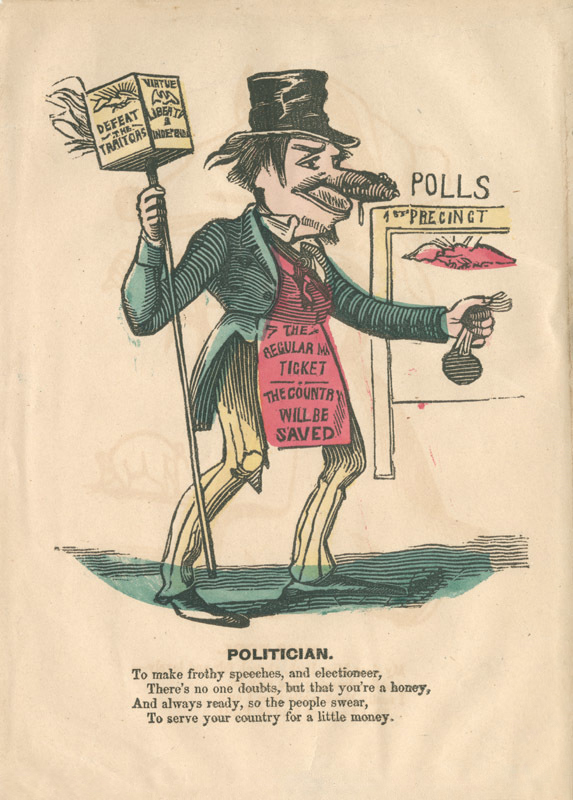
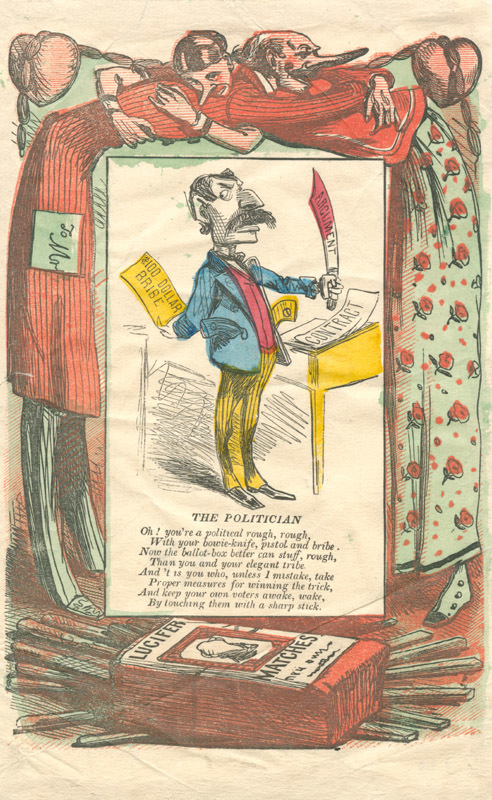
Another “Vinegar Valentine” shows a corrupt politician, armed with a pistol, a cutting sword of argument, a ready bribe, and a lucrative contract. (The creepy couple, I can’t explain.)
Politicial, 1880 (Library Company of Philadelphia)
Women at the polls in Wyoming. Women had been voting in Wyoming since 1870.
Frank Leslie’s Illustrated Newspaper, 1888 (Library of Congress)
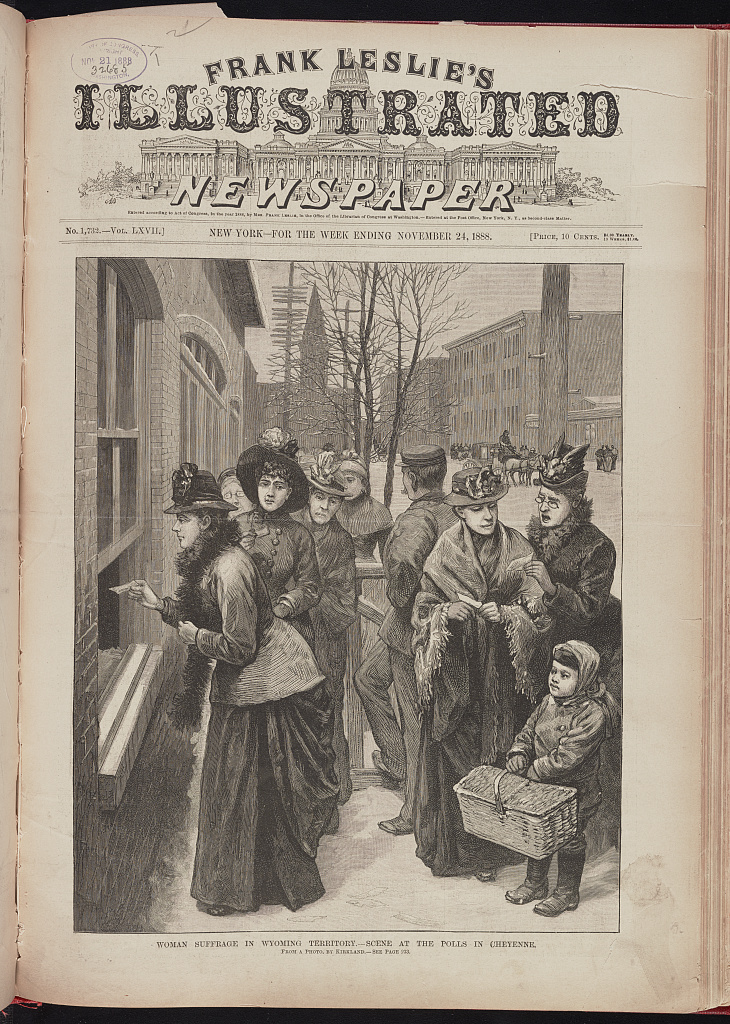
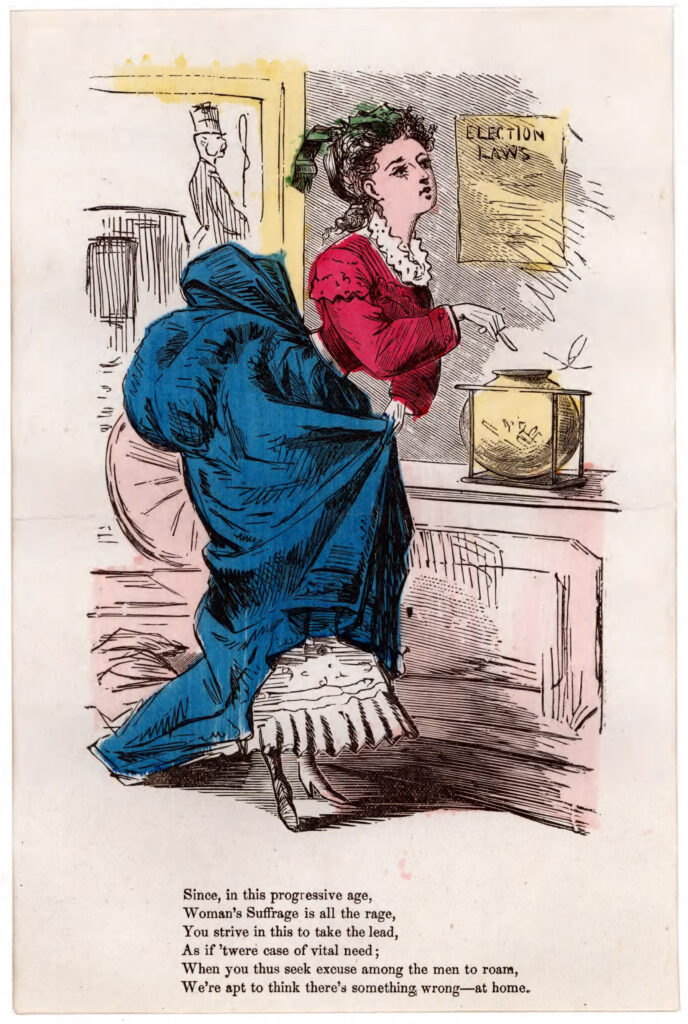
Woman at the polls, 19th century “Vinegar Valentine”, c. 1870-80
Suffragettes, and then women voters, were a popular trope c. 1880-1920. See the collection on the History website.
(Library Company of Philadelphia)
More troubling signs of women “out of place” at the rowdy polls.
19th century “Vinegar Valentine,” c. 1870-80. For more about this phenomenon, and other women voting cards, see the collection on the History website.
(Library Company of Philadelphia)
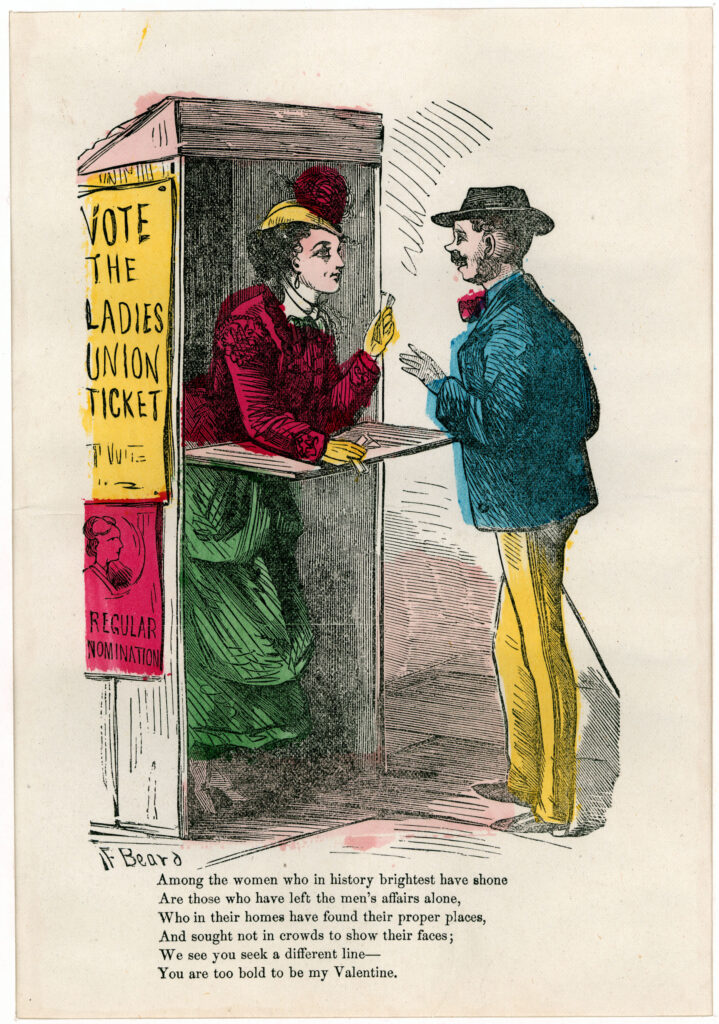
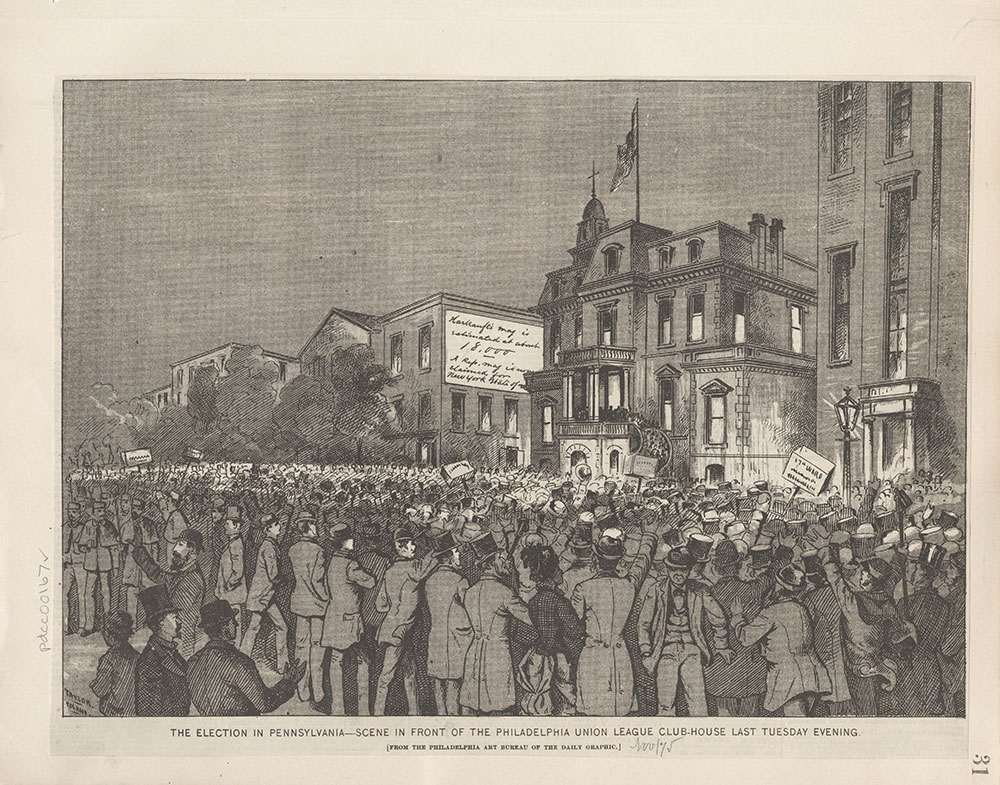
Election Day Night, crowds gather to watch returns projected onto buildings on Broad Street outside the Union League, 1875 (Free Library of Philadelphia)
Political rally outside McKinley’s headquarters. Man stands on a window sill to address the crowd. May have transparencies hanging over second floor windows. Philadelphia, 1896 (Library Company of Philadelphia)
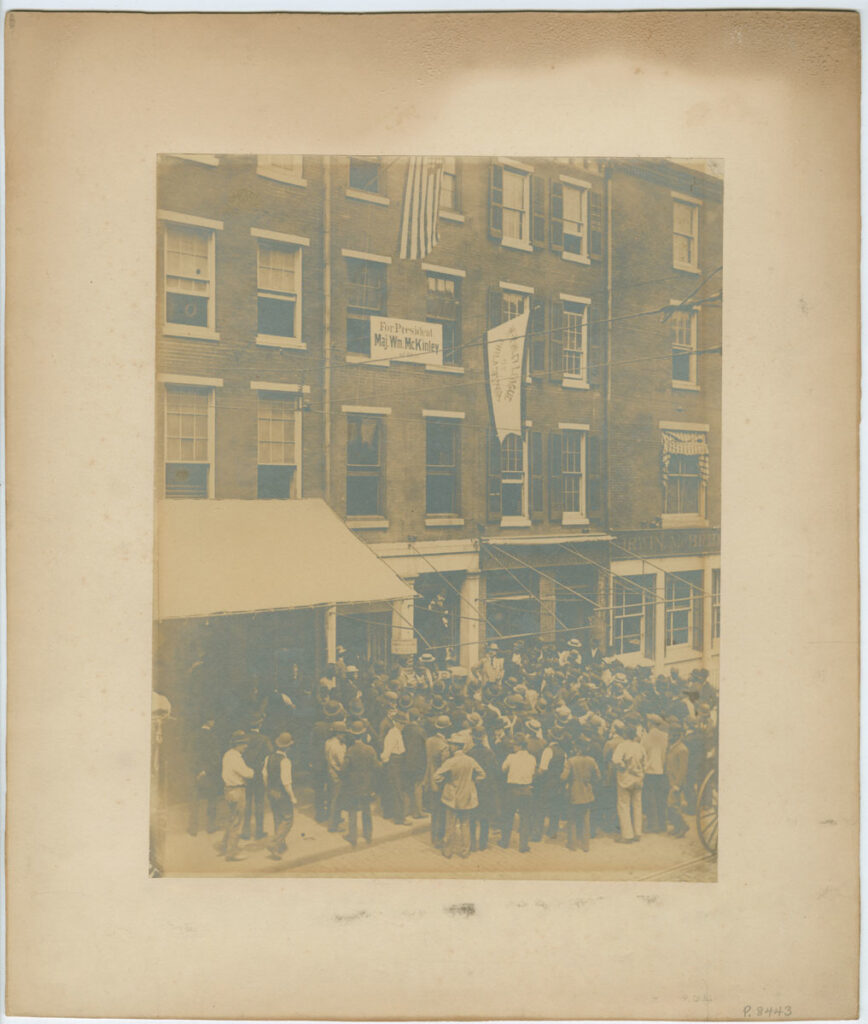
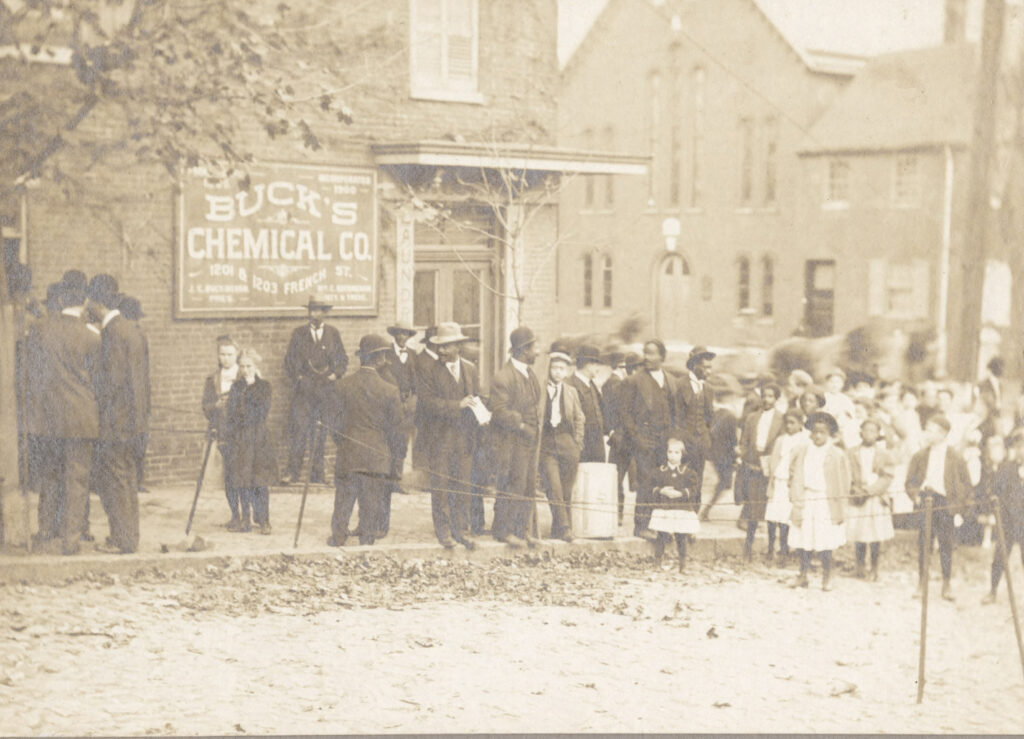
Black men waiting to vote outside the polls in Wilmington, DE, 1907 (Library Company of Philadelphia)
17th Amendment makes U.S. Senators elected by popular vote, rather than selected by state legislators, Corporations, political machine politicians, and big business trusts look on in dismay decrying “mob rule!” while the reformers’ ideal voters cast their ballots. The “common people” are all well-to-do, white men doing their civic duty.
(Cartoon 1913, Free Library of Philadelphia)
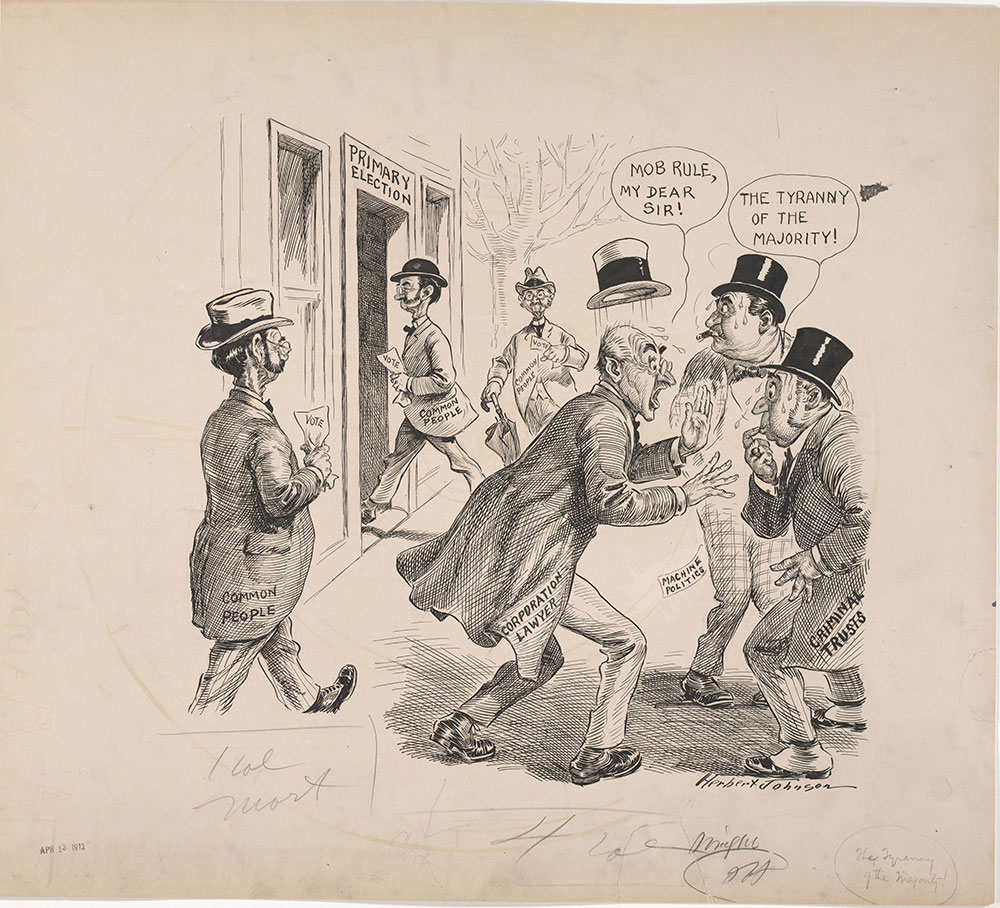
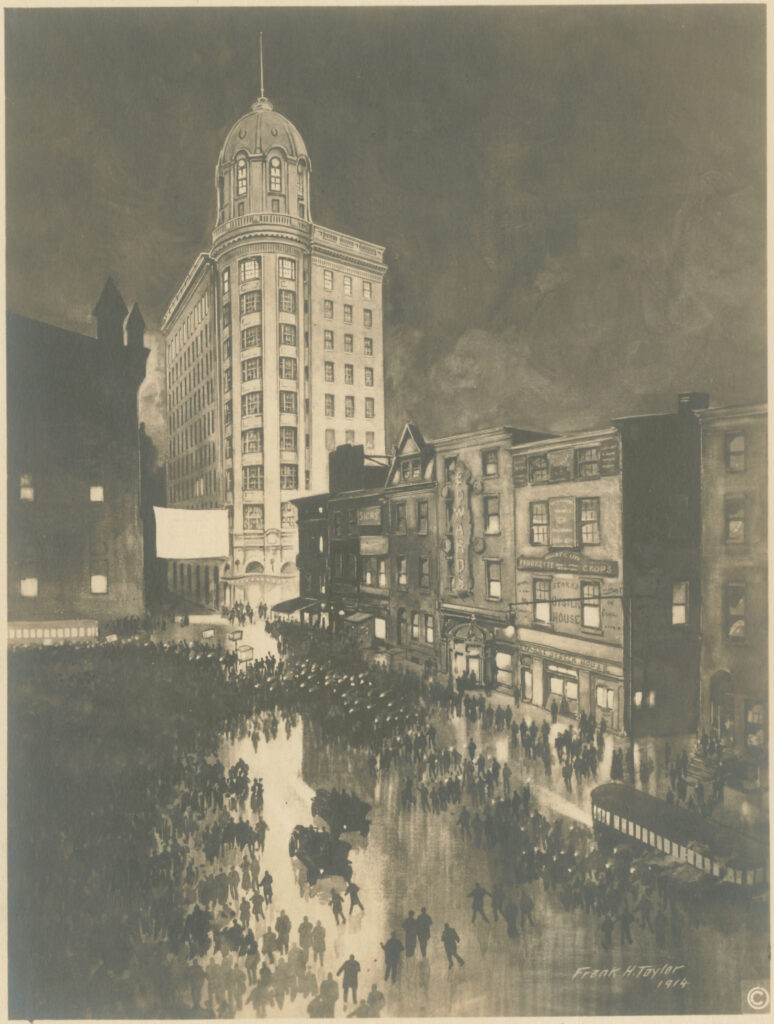
Election Night, Philadelphia 1914, by Frank Taylor. View is looking north towards the brightly-lit Bulletin’s newspaper building at Filbert and Juniper Streets (where the Municipal Criminal Justice building stands today). The Masonic Temple sits in the dark to the left of the Bulletin building. City Hall is just to the left, out of the picture, (Library Company of Philadelphia)
Police are required to remain 30 feet away from the polls. The police were seen as part of the corrupt party machine.
This cartoon appeared in the reformist Evening Public Ledger 1919. It includes a racist depiction of a Black policeman, which tells you all you need to know about how the Reformers felt about people of color. (Free Library of Philadelphia)
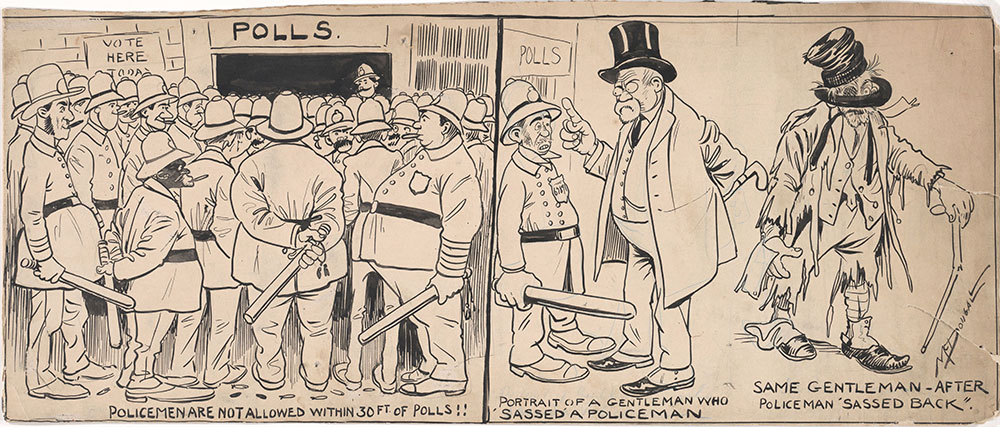
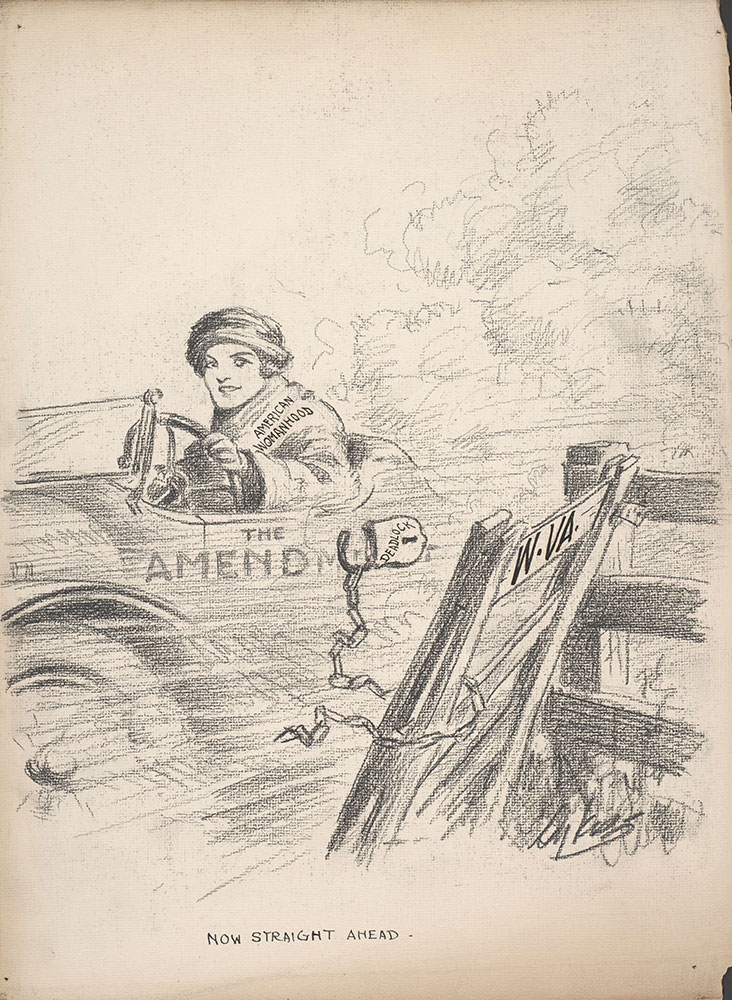
Cartoon marking West Virginia’s ratification of the 20th Amendment giving women the right to vote, 1920 (Free Library of Philadelphia)
Automatic Voting Machine 1936
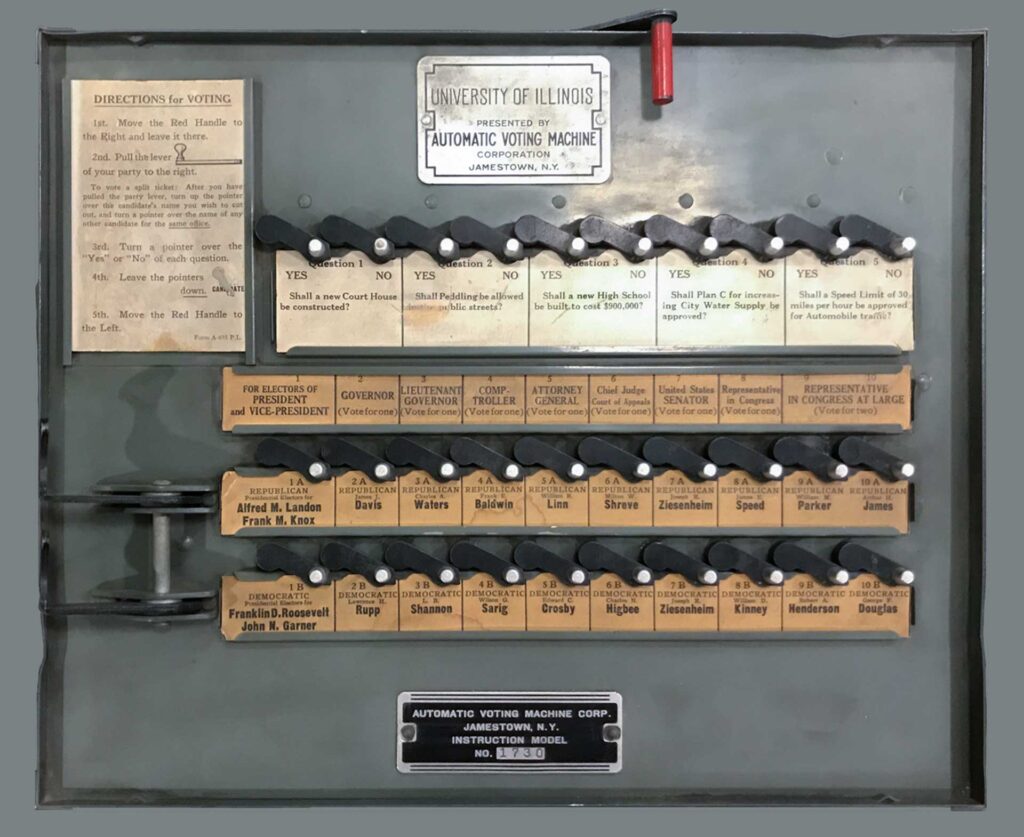
Bibliography
Anon. “The Municipality Councils Reassemble.” The Philadelphia Inquirer. September 3, 1880, p. 2.
Anon. “Before the Battle a Busy Day for Candidates.” The Philadelphia Inquirer. February 20, 1888, p. 3.
Anon. “Troubles at the Polls.” The Philadelphia Inquirer. November 5, 1884, p. 2.
Argersinger, Peter H. “New Perspectives on Election Fraud in the Gilded Age.” Political Science Quarterly, vol. 100, no. 4, 1985, pp. 669–87.
Brewin, Mark. Celebrating Democracy: The Mass-Mediated Ritual of Election Day. New York: Peter Lang, 2008.
Cohen, Amy. “Philadelphia Freedom and the Launch of the 15th Amendment.” Hidden City website. October 19, 2020, https://hiddencityphila.org/2020/10/philadelphia-freedom-and-the-launch-of-the-15th-amendment/
Cohn-Postar, Gideon. ““Vote for Your Bread and Butter”: Economic Intimidation of Voters in the Gilded Age.” The Journal of the Gilded Age and Progressive Era, vol. 20, no. 4, 2021, pp. 480-502.
Cooper, Kenny. “‘We just want to be welcomed back’: The Lenape seek a return home.” WHYY Online website. July 30, 2021, https://whyy.org/articles/we-just-want-to-be-welcomed-back-the-lenape-seek-a-return-home/
Ferguson, Robert. America During and After the War. London: Longmans, Green, Reader, and Dyer, 1866.
Grinspan, Jon. The Age of Acrimony: How Americans Fought to Fix their Democracy, 1865-1917. New York: Bloomsbury Publishing, 2021.
Gidlow, Liette. “Delegitimizing Democracy: ‘Civic Slackers,’ the Cultural Turn, and the Possibilities of Politics.” The Journal of American History, vol. 89, no. 3, 2002, pp. 922–57.
If There Is No Struggle There Is No Progress : Black Politics in Twentieth-Century Philadelphia. Edited by James Wolfinger. Temple University Press, 2022.
Israel, Jonathan. “America’s ‘Conservative Turn’: The Emerging ‘Party System’ in the 1790s.” The Expanding Blaze: How the American Revolution Ignited the World, 1775-1848, Princeton University Press, 2017, pp. 321–60.
Keyssar, Alexander. Right to Vote : The Contested History of Democracy in the United States, Perseus (Hachette), 2008.
Koschnik, Albrecht. “The Democratic Societies of Philadelphia and the Limits of the American Public Sphere, circa 1793-1795.” The William and Mary Quarterly, vol. 58, no. 3, 2001, pp. 615–36.
McCaffery, Peter. “Style, Structure, and Institutionalization of Machine Politics: Philadelphia, 1867-1933.” The Journal of Interdisciplinary History, vol. 22, no. 3, 1992, pp. 435–52.
Neiheisel, J. R. “Reconciling Legal-Institutional and Behavioral Perspectives on Voter Turnout: Theory and Evidence from Pennsylvania, 1876–1948.” State Politics & Policy Quarterly, 16(4), 2016, pp. 432-454.
Owen, Kenneth. “The Persistence of Political Community, 1795–1799.” Political Community in Revolutionary Pennsylvania, 1774-1800, Oxford Historical Monographs (Oxford, 2018; online edn, Oxford Academic, 20 Sept. 2018), https://doi.org/10.1093/oso/9780198827979.003.0006, accessed 25 Aug. 2024.
Passley, Jeffrey.“Whiskey Chaser: Democracy and Violence in the Debate over the Democratic-Republican Societies and the Whiskey Rebellion.” Between Sovereignty and Anarchy : The Politics of Violence in the American Revolutionary Era, edited by Patrick Griffin, et al., University of Virginia Press, 2015, pp. 187-215.
Pole, J.R. “Election Statistics in Pennsylvania, 1790-1840.” Pennsylvania Magazine of History and Biography, 82, April 1958, pp. 217-219.
Ratcliffe, Donald. “The Right to Vote and the Rise of Democracy, 1787—1828.” Journal of the Early Republic, vol. 33, no. 2, 2013, pp. 219–54.
Reader, David “Appeal to Forty Thousand Citizens.” Encyclopedia of Greater Philadelphia website. 2015, https://philadelphiaencyclopedia.org/essays/appeal-of-forty-thousand-citizens/
Robertson, Andrew W. “Voting Rites and Voting Acts: Electioneering Ritual, 1790–1820.” Beyond the Founders: New Approaches to the Political History of the Early American Republic, edited by Andrew W. Robertson et al., University of North Carolina Press, 2004, pp. 57–78.
Selinger, Jeffrey S. “Rethinking the Development of Legitimate Party Opposition in the United States, 1793-1828.” Political Science Quarterly, vol. 127, no. 2, 2012, pp. 263–87.
Sharp, James Roger. “The Election of 1796.” American Politics in the Early Republic: The New Nation in Crisis, Yale University Press, 1993, pp. 138–62.
Silcox, Harry C. “William McMullen, Nineteenth Century Political Boss.” The Pennsylvania Magazine of History and Biography, vol 110, no. 3, 1986, pp. 389-412.
Soderlund, Jean R. Lenape Country. Philadelphia: University of Pennsylvania Press, 2015.
Steffen, Charles G. “Newspapers for Free: The Economies of Newspaper Circulation in the Early Republic.” Journal of the Early Republic, vol. 23, no. 3, 2003, pp. 381–419.
Wheeler, William B. “Pennsylvania and the Presidential Election of 1800: Republican Acceptance of the 8-7 Compromise.” Pennsylvania History: A Journal of Mid-Atlantic Studies, vol. 36, No. 4 October 1969, pp. 424-429.
Winch, Julie. “‘You Know I Am a Man of Business’: James Forten and the Factor of Race in Philadelphia’s Antebellum Business Community.” Business and Economic History, vol. 26, no. 1, 1997, pp. 213–28.
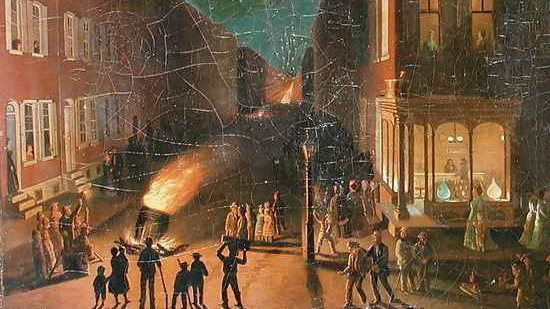
[…] and see images of Election Day in Philadelphia throughout history, follow this link to read the Election Day in Philadelphia Companion Blog. You’ll find a full list of my sources there as […]